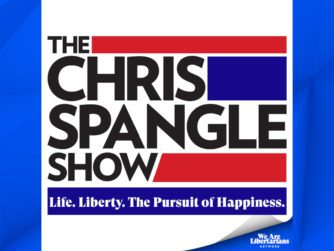Back in the summer of 2009, a much younger and fresher Barack Obama and his allies in the Democratic Party had health care at the center of attention in the world of politics. The drama that unfolded during 2009 and 2010 which included party switching, deaths, longshots winning special elections, and parliamentary tricks all led to what is now commonly referred to as “Obamacare”.
The Patient Protection and Affordable Care Act was ultimately signed into law on March 23, 2010. During this time, I was blogging regularly and watching entirely too much C-SPAN. Fast forward seven years, and now we see the dreams of Republicans seeking to repeal Obamacare about to come true. Or, more likely, we are about to see another hybrid mess of a bill that puts more bandages on the festering wound that is our health care system.
I have dug into my personal archives to edit and re-publish a series of posts that I made on health care. This will traverse the theoretical to the practical. This first post will discuss the concepts of insurance and public utilities. Interestingly, the original post was from August 22, 2009; just three days before the death of Ted Kennedy.
Insurance basics
As we begin to explore the health care debate, I think it’s important to start with a review of insurance. Health insurance is central to the entire American health care system. Both in 2008 and 2006, the left’s talking points are often about “health care reform”; however, it was interesting to see the Obama administration shift its messaging in 2009 toward “health insurance reform” as illustrated in this letter from Obama senior advisor David Axelrod. (This was one of the first signals to his base that and single-payer or “Medicare-for-all” type of option was not happening. The ACA was on a path toward the center with strong involvement from the insurance lobby.)
The basic concept of insurance is simple and widely used. As a formal financial product, it is actually relatively new. One can imagine the early beginnings of insurance when a community of citizens would offer to provide mutual assistance to each other if one had a disastrous event such as a fire. If you are interested in the history of insurance, check out this Wikipedia entry.
A simplistic description of insurance products in the private sector can be described as a service to pool risk. A group of people collectively pay a regular fixed amount (or premium) to the insurance provider who agrees to pay the costs of a certain event (or, in some cases a set amount of money). Economically, it makes sense that the price of the premiums would be correlated with the expectation of a payout from the insurance company – measured by the probability of the event happening times the size of the potential payout. There is a whole field of study on this called actuarial science.
Is insurance a public utility?
Now, let’s turn to the concept of a public utility. Now I know that many libertarians might scream at the mere concept of a public utility. I am not that type of libertarian. I live in the real world and, while I love theoretical debates and the abstract, public policy is not going to be a black-and-yellow utopia any time soon. Pragmatically, I do support narrow and limited public spending for large investments in infrastructure which serve a public good where the returns on investment are either difficult to measure or take a long time to be realized. This is often the case in situations which economists call a natural monopoly. Typical examples of such public utilities would be road construction, power grids, and sewage lines.
Should insurance (of any type) be viewed as a public utility? Let’s examine the characteristics. While a responsible insurance company certainly should be well-capitalized, it does not necessarily require a large investment in infrastructure up front with long, slow returns. The biggest start-up risk to an insurance provider would be a series of unlikely events which would require significant payouts before reserves could be established through the collection of premiums.
Let’s explore an example of an insurance product. Say that there are a group of people who want insurance to protect against an expensive and unlikely event. We’ll pretend there are 100 potential insurance customers who, for the purpose of illustration, must pay $1000 if they roll a 1-1-1 on a toss of three dice every Saturday. The odds of any one individual in any given week needing to pay $1000 is just 1/216 (or 0.46%). While this is unlikely to happen, the people want to avoid having to pay the $1000 so they seek insurance. The insurance provider offers to pay the $1000 on behalf of their customer in return for a monthly premium of $30. The potential customer will pay $360 year to protect them against a $1000 dollar loss which, over the long run, is likely to happen once every four years. In this simple example, the insurance company has about a 0.1% of going bankrupt (with no other expenses other than those from claims) and will operate with a 25% margin. This hardly qualifies as a public utility nor would it lead to a natural monopoly.
But, they could go bankrupt. Bad luck, tighter margins from competition, or poor risk estimates could all plague an insurance company. And, when an insurance company does go bankrupt, they will not be able to pay out on claims which will leave consumers, who have paid their premiums, without coverage. Should the government backstop this risk? I would say that they should not since both parties entered the insurance contract as a way to manage risk. The consumer should know that there is a small risk that they will not be covered by their insurance if the provider itself goes bankrupt.
The analogous situation in our simple of a community joining together in an agreement of mutual assistance in the event of a disaster would be when the community itself suffers a disaster. If all of the houses burns down, then everyone will have to do the equivalent work of rebuilding their own home. This is, in essence, the same problem as “too big to fail” which was so hotly debated in the world of financial services during the Financial Crisis of 2007-2008.
What does this mean for health insurance?
In summary, I think it is clear that insurance does not meet that basic description of a public utility. This, in my opinion, does not make it a good candidate for public investment. There are risks in insurance; the entire concept of insurance is all about risk. There are even “too big to fail” risks. But, these risks can and should be managed via market regulations, competition and/or transparency for consumers and investors. It should not be turned over to the state.
This should extend to health insurance. Unfortunately, most of our health care access is directly linked to health care insurance. I will discuss features of what I believe to be a better health care system in future posts, but one feature is disconnecting the relationship between basic care and insurance products which should simply cover catastrophic or more unforeseen events.



